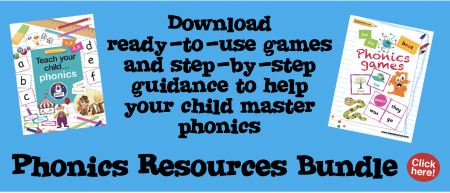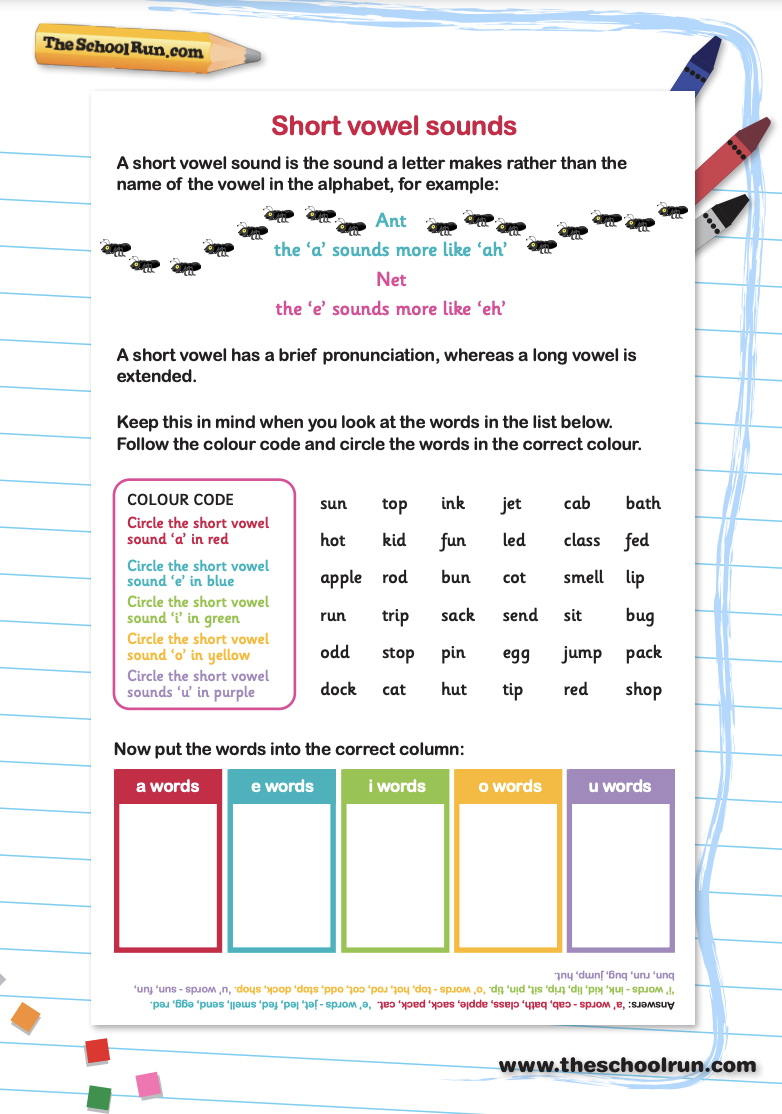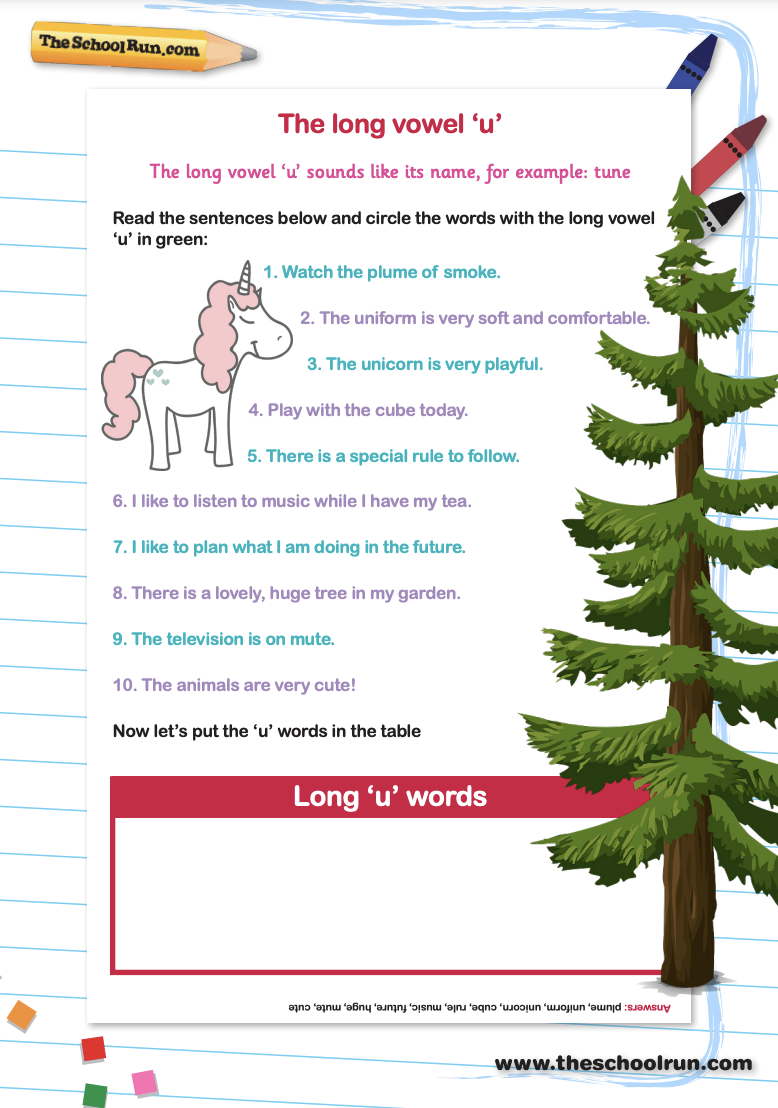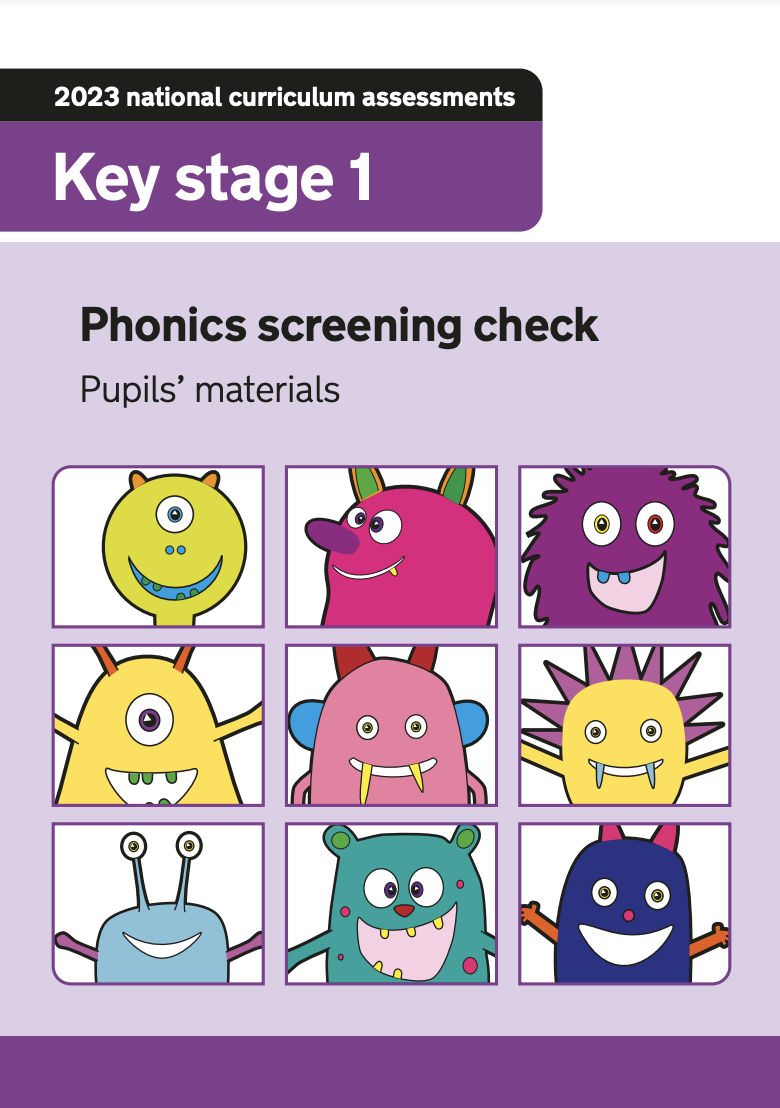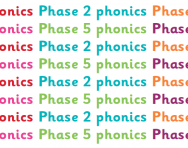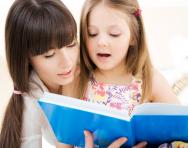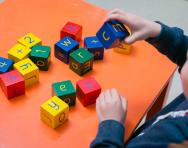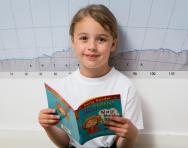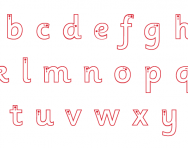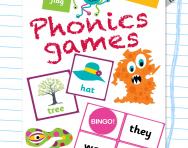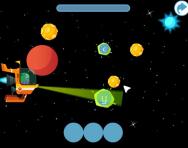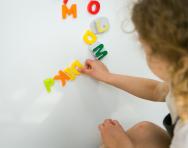What is phonics?
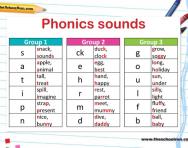
Contents:
What is phonics?
What is a phoneme?
Phonics step 1: decoding
Phonics step 2: blending
Phonics step 3: decoding CVC words
Phonics step 4: decoding consonants clusters
Phonics step 5: vowel digraphs
Phonics step 6: consonant digraphs
Encoding
Phonics in KS1
Free phonics worksheets
Phonics FAQs
What is phonics?
Phonics is a method of teaching children to read by linking sounds (phonemes) and the symbols that represent them (graphemes, or letter groups). Phonics is the learning-to-read method used in primary schools in the UK today.
What is a phoneme in phonics?
A phoneme is the smallest unit of sound. The phonemes used when speaking English are: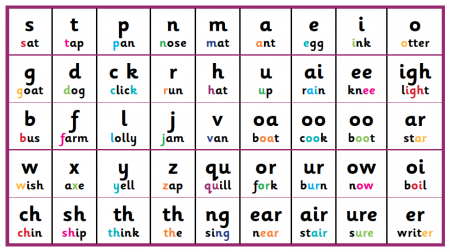
Print out a list of phonemes to practise with your child or listen to the individual sounds being spoken with our phonics worksheets.
Phonics learning step 1: decoding
As part of phonics learning, children are taught letter sounds in Reception. This involves thinking about what sound a word starts with, saying the sound out loud and then recognising how that sound is represented by a letter.
The aim is for children to be able to see a letter and then say the sound it represents out loud. In phonics, this is called decoding.
Some phonics programmes start children off by learning the letters s, a, t, n, i, p first. This is because once they know each of those letter sounds, they can then be arranged into a variety of different words (for example: sat, tip, pin, nip, tan, tin, sip, etc.). While children are learning to say the sounds of letters out loud, they will also begin to learn to write these letters (encoding).
They will be taught where they need to start with each letter and how the letters need to be formed in relation to each other. Letters (or groups of letters) that represent phonemes are called graphemes.
Phonics learning step 2: blending
The next step in phonics requires children to go from saying the individual sounds of each letter, to being able to blend the sounds and say the whole word. This can be a big step for many children in their phonics learning and takes time.
Phonics learning step 3: decoding CVC words
In step 3 of phonics learning, children will focus on decoding (reading) three-letter words arranged consonant, vowel, consonant (CVC words) for some time.
They will learn other letter sounds, such as the consonants g, b, d, h and the remaining vowels e, o, u. Often, they will be given phonics letter cards to put together to make CVC words which they will be asked to say out loud.
Phonics learning step 4: decoding consonant clusters in CCVC and CVCC words
Next in the phonics learning journey, children will learn about consonant clusters: two consonants located together in a word, such tr, cr, st, lk, pl. Children will learn to read a range of CCVC words (consonant, consonant, vowel, consonant) such as trap, stop, plan.
They will also read a range of CVCC words (consonant, vowel, consonant, consonant) such as milk, fast, cart.
Phonics learning step 5: vowel digraphs
In step 5 of phonics learning, children are introduced to vowel digraphs. A digraph is two vowels that together make one sound such as: /oa/, /oo/, /ee/, /ai/. They will move onto sounding out words such as deer, hair, boat, etc. and will be taught about split digraphs (or 'magic e').
They will also start to read words combining vowel digraphs with consonant clusters, such as: train, groan and stool.
Phonics learning step 6: consonant digraphs
Another step in phonics is learning the consonant digraphs (two consonants that together make one sound) ch and sh and start blending these with other sounds to make words, such as: chat, shop, chain and shout.
Phonics encoding, or learning to spell as well as read
Alongside this process of learning to decode (read) words, children will need to continue to practise forming letters which then needs to move onto encoding. Encoding is the process of writing down a spoken word, otherwise known as spelling.
They should start to be able to produce their own short pieces of writing, spelling the simple words correctly.
It goes without saying that reading a range of age-appropriate texts as often as possible will really support children in their grasp of all the reading and spelling of all the phonemes.
Phonics learning in KS1
By the end of Reception, children will have progressed with their phonics learning and should be able to write one grapheme for each of the 44 phonemes.
In Year 1, they will start to explore vowel digraphs and trigraphs (a group of three letters that makes a single sound, like 'igh' as in 'sigh') further.
They will begin to understand, for example, that the letters ea can make different sounds in different words (dream and bread). They will also learn that one sound might be represented by different groups of letters: for example, light and pie (igh and ie make the same sound).
Children in Year 2 will be learning spelling rules, such as adding suffixes to words (such as -ed, -ing, -er, -est, -ful, -ly, -y, -s, -es, -ment and -ness). They will be taught rules on how to change root words when adding these suffixes (for example, removing the 'e' from 'have' before adding 'ing') and then move onto harder concepts, such as silent letters (knock, write, etc) and particular endings (le in bottle and il in fossil).
Free phonics worksheets and information for parents
For more information about the phonics system look through our phonics articles, including ways to boost phonics confidence, details of the Year 1 Phonics Screening Check, parents' phonics questions answered and more.
We also have a large selection of free phonics worksheets to download for your child.
Phonics FAQs
Q: What is phonics?
A: Phonics is a method of teaching reading and writing that emphasises the relationship between letters (graphemes) and their corresponding sounds (phonemes) in spoken language. It helps children decode words by sounding out the individual phonemes and blending them together.
Q: Why is phonics important in learning to read?
A: Phonics lays the foundation for reading by enabling children to decode words independently. It helps them understand the alphabetic principle, which is the idea that letters represent sounds. Mastering phonics skills enhances reading fluency, comprehension, and spelling abilities.
Q: How do you teach phonics?
A: Phonics instruction typically begins with teaching the alphabet and letter-sound correspondences. Children then learn to blend sounds together to form words and to segment words into individual sounds. Phonics instruction often involves a combination of explicit teaching, practice with decodable texts, and activities such as word games.
Q: At what age should phonics begin?
A: Phonics instruction can begin as early as Nursery, typically when children start to learn letter names and sounds. However, the specific age at which phonics instruction begins may vary depending on the educational approach and individual readiness. Early exposure to phonics can help lay a strong foundation for reading development.
Q: How can parents support phonics learning at home?
A: Parents can support phonics learning at home by engaging in activities that reinforce letter-sound relationships, such as reading aloud with their children, playing word games, and practising phonemic awareness skills through activities like rhyming and segmenting sounds in words.

Give your child a headstart
- FREE articles & expert information
- FREE resources & activities
- FREE homework help
